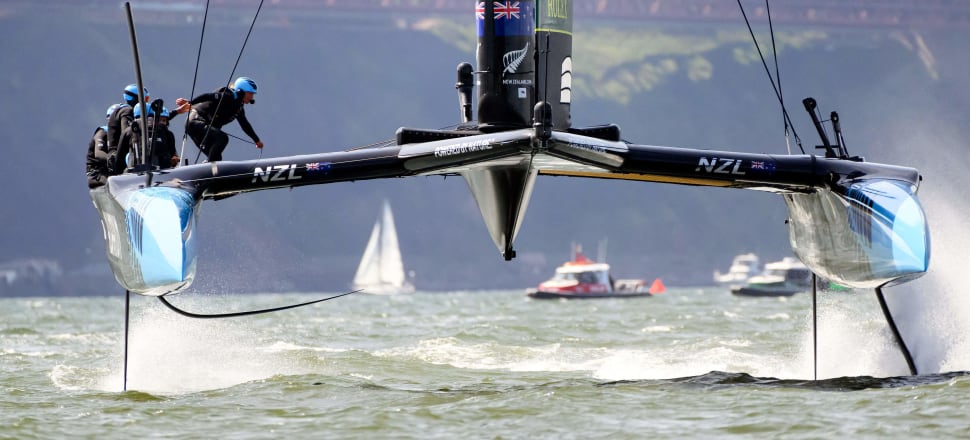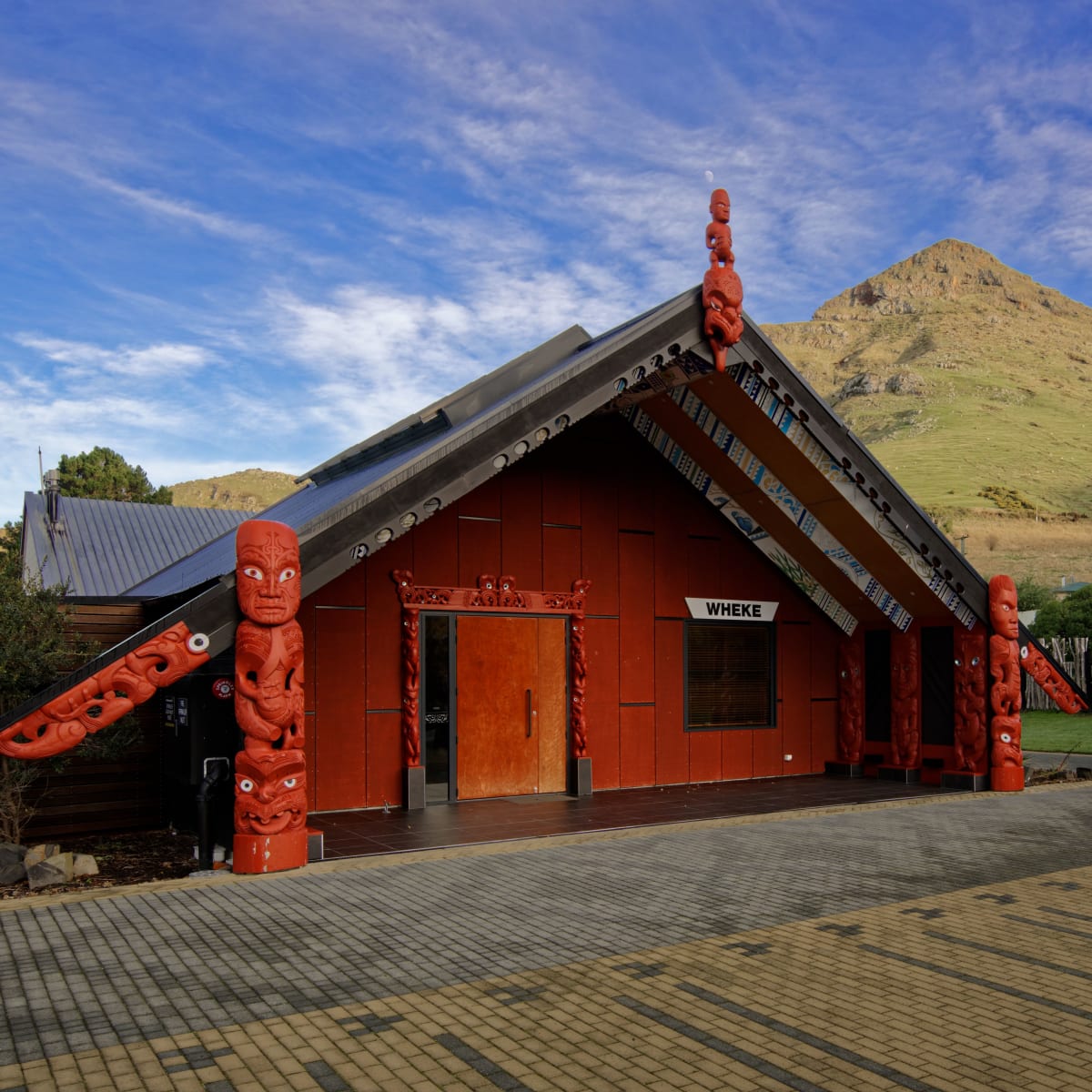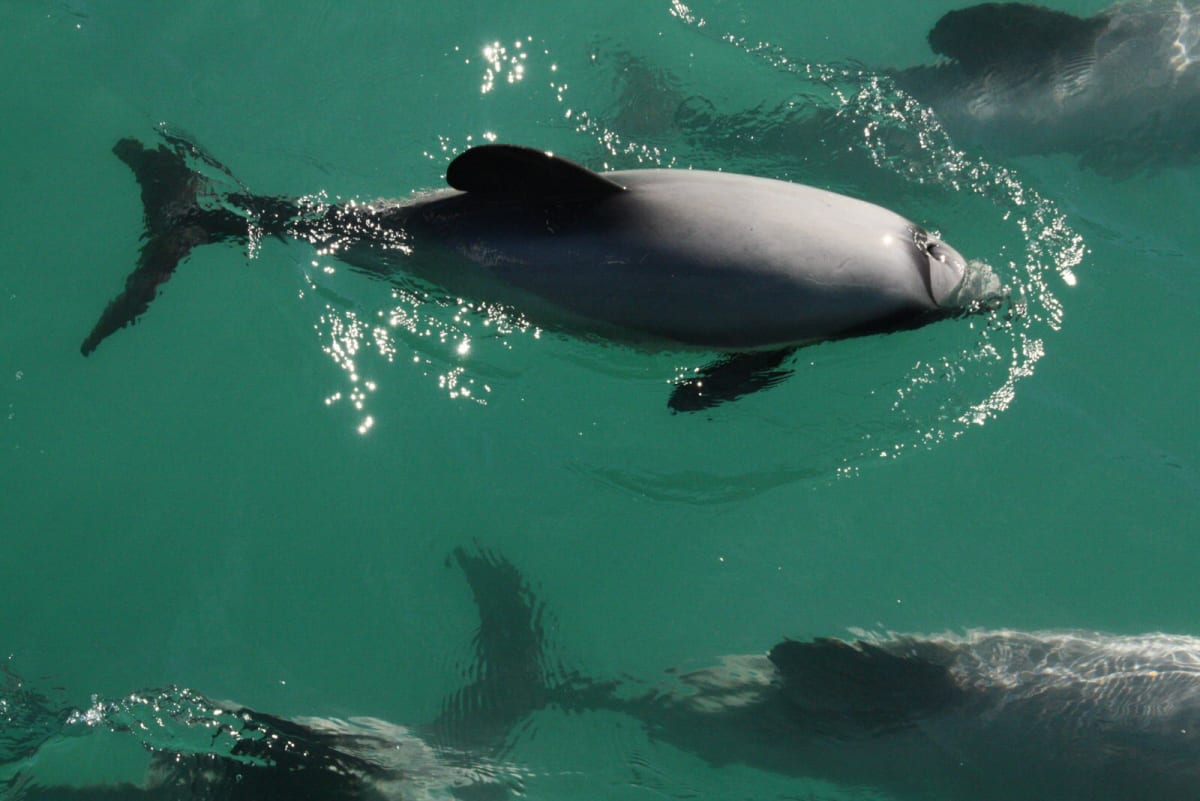
Key players in the international sailing race gather, as documents reveal danger of losing local hapū’s support. David Williams reports
The glow didn’t take long to fade.
An action-packed weekend of SailGP racing wrapped up on a sun-drenched Sunday in March, with Canada’s catamaran denying New Zealand a win in their inaugural home event on Lyttelton Harbour/Whakaraupō.
Ōtautahi/Christchurch’s economic development agency said on its website: “The sold-out event left a legacy of benefits for Christchurch, from inspirational programmes for youth to improved infrastructure, strengthened cultural partnerships, and new initiatives in conservation and sustainably-focused business.”
However, as thousands of satisfied spectators slipped back to the city, trouble was already brewing.
READ MORE: * Dolphin investigation: SailGP responded by email * Is it dollars over dolphins for sail race?
It emerged later that organisers of the international sailing event – held in a marine mammal sanctuary – ignored instructions to stop the final race when dolphins were detected nearby, prompting an investigation by the Department of Conservation (DoC).
The hydro-foiling catamarans, known as F50s, can reach speeds of up to 100kmh, and there were fears of vessels striking and killing a nationally vulnerable Upokohue/Hector’s dolphin.
Dolphin-detecting measures during racing included observers, on land and water, drone surveys and acoustic detectors.
Indeed, Saturday’s racing in March was delayed by 40 minutes after a dolphin sighting.
DoC’s probe concluded without establishing an offence took place. Last month, retired marine biologist Liz Slooten upbraided SailGP for what she called an obvious failure to follow its own rules, enshrined in a marine mammal management plan.
What hasn’t been clear up until now is the view of Te Hapū o Ngāti Wheke, Rāpaki, guardians of Whakaraupō, which played an important role in developing the plan.
But emails released by ChristchurchNZ, the city’s economic development agency, show how upsetting the incident was to hapū. Now, a statement to Newsroom from Ngāti Wheke suggests its support for the event – which is scheduled to race again on Whakaraupō in 2025 – isn’t a given.
Later today, Ngāti Wheke, SailGP and ChristchurchNZ will gather for a debrief of March’s controversial event. A review of the management plan is expected to be discussed.

“This is serious,” Tutehounuku (Nuk) Korako, chair of the Rāpaki SailGP organising komiti, wrote to ChristchurchNZ’s Tracey Wilson before dawn on Monday, March 20 – the day after the final race.
“We need to find a way to limit or arrest any potential damage to a very successful SailGP event.”
(This email, and others, were released to Newsroom after an official information request.)
As has already been revealed by DoC, two nationally vulnerable Upokohue/Hector’s dolphins were tracked moving towards the SailGP race area on March 19.
Observers believed they’d entered “zone 4” of the race area, which, under the management plan, meant the event director should “cease racing and instruct all boats to drop off the foils if racing is underway”.
Ngāti Wheke’s Yvette Couch-Lewis and DoC’s Mahaanui operations manager Andy Thompson were in the control room, according to Korako’s email.
“SailGP disregarded both Yvette and Andy’s instructions to bring the boats down off their foils after a pod of dolphins were detected close or within the race course area,” he wrote.
“I have asked Yvette to stay calm tonight as she was very upset.”
An urgent meeting was called for March 20 between Ngāti Wheke, DoC, SailGP’s environmental advisors, Enviser, and iwi Te Rūnanga o Ngāi Tahu, to “get a full briefing”.
“Rāpaki will then be in contact with SailGP through Karl Budge,” Korako told ChristchurchNZ’s Wilson, “as we need to hear the SailGP side of what took place from their perspective.”
Ngāti Wheke’s statement to Newsroom suggests what they heard from race organisers wasn’t enough to assuage concerns.

“Te Hapū o Ngāti Wheke, Rāpaki was supportive of the Department of Conservation’s decision to investigate the SailGP incident that occurred during the final race,” says the statement from Korako, and chair Mishele Radford.
“While DoC was unable to determine if an offence ocurred, we are saddened that advice given by the marine mammal coordinator, DoC and our representative during the final leg of the race went unheeded.”
In expressing its rangatiratanga (right to exercise authority), it is important to the hapū to ensure events within Whakaraupō are “carried out in a way that upholds cultural integrity, which includes the safeguarding of our taonga species”.
The statement says Ngāti Wheke want “genuine improvement”. While the marine mammal management plan (MMMP) “has integrity”, it’s beholden on all parties to maintain that integrity.
“There were some lessons learnt from this first event by all, and it is the expectation of Te Hapū o Ngāti Wheke, Rāpaki, that SailGP will demonstrate through review, how they intend to improve the implementation of the MMMP.
“Our future support will be contingent on this review.”
Korako adds it will seek changes to the Whakaraupō marine mammal sanctuary rules “to ensure the protection of marine mammals”.
Such changes wouldn’t be necessary, you would think, if hapū thought SailGP’s management plan could be relied upon.
“Fast boats, and fishing methods that kill dolphins, need to be banned from the sanctuary.” – retired marine biologist Liz Slooten
Newsroom put Ngāti Wheke’s statement to SailGP, asking the focus of its management plan review, when it’s likely to be completed, and whether it would be made public. Also, whether SailGP supports changes to the sanctuary’s rules to better protect dolphins.
Initially, senior manager of marketing and communications Natalie Fortier said: “SailGP is preparing for its Season 4 opening event in Chicago and will be unable to respond to your query before publication deadline.”
(The New Zealand team won in Chicago.)
After we sent details of Korako’s March 20 email to Wilson, Budge emailed back, warning of “wildly inaccurate” information. He promised to call on Saturday but sent an emailed statement instead.
The passage Budge took umbrage with said: “The Swiss SailGP controller and ultimately the head of the NZ ITM SailGP Event, Karl Budge, put SailGP in breach of the MMMP Plan.”
According to the email, a representative of Enviser, the race’s environmental consultants, “confirmed to SailGP that they were in breach”.
Budge says in his statement: “The supplied correspondence suggesting SailGP officers put the event in breach of the MMMP is inaccurate, misinformed and SailGP strongly rejects this assertion.
“DOC’s investigation found no breach of the Marine Mammal Protections Act, and their report states clearly there is no evidence that yachts were within 300 metres of the dolphins or that individual skippers were aware of their presence.”
The statement doesn’t mention the management plan review.
Previously, Budge said of the March 19 incident SailGP determined it was safe to continue racing. “No dolphins were in any danger at any point within the final race, and there were no incidents between F50s and marine mammals over the course of the entire weekend.”
ChristchurchNZ, the economic development agency, is pouring millions of dollars from the city’s ratepayers into hosting the SailGP race, which is broadcast to an audience of millions. The agency’s board “reviewed and approved” the marine mammal management plan.
General manager of destination and attraction Loren Heaphy says the support of Te Hapū o Ngāti Wheke, Rāpaki, as kaitiaki of Whakaraupō, “is vital to the event”. ChristchurchNZ supports a review of the management plan which, she says, was always expected to happen before the 2025 race.
There was no legislative requirement for SailGP to produce such a plan, Heaphy says.
“After consultation with Te Hapū o Ngāti Wheke, SailGP agreed to create a framework which would provide protection to the Hector’s dolphins. In addition, ChristchurchNZ’s board required the plan to be developed as a clause within the host city contract.”
Heaphy says the “unprecedented plan” – “which showed a genuine commitment to marine mammal welfare by SailGP” – contributed to the “highly successful” event, at which no marine mammals were struck or harmed.
“We also think that discussions around how best to protect marine mammals have been positive, helping to raise awareness of the Hector’s dolphins and providing a legacy framework for developing new research and technology that supports this species.”
Asked if the agency supports changes to the Whakaraupō marine mammal sanctuary rules, Heaphy says the agency can’t comment as that’s outside its role and expertise.
What an expert thinks
Slooten, the retired marine biologist, says the event failed to protect Hector’s on several levels – given the management plan wasn’t effective, race organisers didn’t adhere to their own plan, and there was no prosecution or follow-up to deal with non-compliance.
“I agree with Te Hapū o Ngāti Wheke Rāpaki that the marine mammal sanctuary rules need to be changed,” she says via email. “Fast boats, and fishing methods that kill dolphins (gillnets and trawling), need to be banned from the sanctuary.”
Many Hector’s dolphin deaths reported on a DoC database since August 1 last year have been along Canterbury’s coast.
Genevieve Robinson, deputy chair of national advocacy group Māui and Hector’s Dolphin Defenders, says changes to the sanctuary rules would ideally be extended to 20 nautical miles. She hopes Conservation Minister Willow-Jean Prime takes the request seriously.
In a statement, Prime says she supports Ngāti Wheke’s “overall objective” of protecting marine mammals.
“I am advised the department will be considering the measures used to reduce risks to marine mammals during the SailGP race as part of its post-event review process, and will look at what changes could be made to further reduce any risks to Hector’s dolphins.
“This will consider whether changes to the marine mammal sanctuary rules could be used to strengthen protection of this taonga species.”
From Ngāti Wheke’s statement, it appears better protection for Upokohue is a bottom line.
Rewinding the clock to days before racing began on Whakaraupō in March, a SailGP press statement quoted hapū spokeswoman Couch-Lewis as saying: “We believe that our whakapapa is connected to all living things. So we are connected to the Hector’s dolphin and it is our responsibility as mana whenua to protect this area for future generations.”







